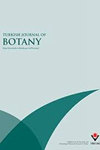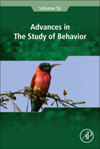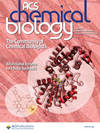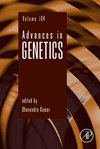期刊简介
The Turkish Journal of Botany is published electronically 6 times a year by the Scientific and Technological Research Council of Turkey (TÜBİTAK) and accepts manuscripts (in English) covering all areas of plant biology (including genetics, evolution, systematics, structure, function, development, diversity, conservation biology, biogeography, paleobotany, ontogeny, functional morphology, ecology, reproductive biology, and pollination biology), all levels of organisation (molecular to ecosystem), and all plant groups and allied organisms (algae, fungi, and lichens). Authors are required to frame their research questions and discuss their results in terms of major questions in plant biology. In general, papers that are too narrowly focused, purely descriptive, or broad surveys, or that contain only preliminary data or natural history, will not be considered (*). The following types of article will be considered: 1. Research articles: Original research in various fields of botany will be evaluated as research articles. 2. Research notes: These include articles such as preliminary notes on a study or manuscripts on the morphological, anatomical, cytological, physiological, biochemical, and other properties of plant, algae, lichen and fungi species. 3. Reviews: Reviews of recent developments, improvements, discoveries, and ideas in various fields of botany. 4. Letters to the editor: These include opinions, comments relating to the publishing policy of the Turkish Journal of Botany, news, and suggestions. Letters should not exceed one journal page. (*) 1. Raw floristic lists (of algae, lichens, fungi, or plants), species descriptions, chorological studies, and plant sociology studies without any additional independent approaches. 2. Comparative morphology and anatomy studies (that do not cover a family, tribe, subtribe, genus, subgenus, section, subsection, or species complexes with taxonomical problems) without one or more independent additional approaches such as phylogenetical, micromorphological, chromosomal and anatomical analyses. 3. Revisions of family, tribe, genus, subgenus, section, subsection, or species complexes without any original outputs such as taxonomical status changes, IUCN categories, and phenological and ecological analyses. 4. New taxa of all plants without any additional independent approaches such as phylogenetical, ecological, chromosomal, chorological and correlational analyses in addition to a detailed macro- and micro-morphological descriptions with quality field and microscopic illustrations of taxonomically important structures and identification key in the taxonomic group.New records of all plants without any additional independent approaches such as phylogenetical, ecological, chromosomal, chorological and correlational analyses in addition to a detailed macro- and micro-morphological descriptions with quality field and microscopic illustrations of taxonomically important structures and identification key in the taxonomic group may be accepted for peer review if they contain 3 or more new records or taxonomical status update, such as lectotypification, new combinations, transfers, revivals and synonyms.5. New taxa of algae, lichens, and fungi without any additional independent approaches such as phylogenetical, ecological, chromosomal, chorological and correlational analyses in addition to a detailed macro- and micro-morphological descriptions with quality field and microscopic illustrations of taxonomically important structures and identification key in the taxonomic group.New records of algae, lichens, and fungi without any additional independent approaches such as phylogenetical, ecological, chromosomal, chorological and correlational analyses in addition to a detailed macro- and micro-morphological descriptions with quality field and microscopic illustrations of taxonomically important structures and identification key in the taxonomic group may be accepted for peer review if they contain 5 or more new records or taxonomical status update, such as lectotypification, new combinations, transfers, revivals and synonyms.
土耳其植物学杂志由土耳其科学和技术研究理事会每年以电子方式出版6期(TÜBTAK)并接受手稿(英语)涵盖植物生物学的所有领域(包括遗传学、进化学、系统学、结构、功能、发育、多样性、保护生物学、生物地理学、古植物学、个体发育学、功能形态学、生态学、生殖生物学和授粉生物学),所有层次的组织(分子到生态系统),以及所有植物类群和相关生物(藻类、真菌和地衣)。作者被要求提出他们的研究问题,并根据植物生物学中的主要问题讨论他们的结果。一般来说,过于狭窄的重点,纯粹的描述性,或广泛的调查,或只包含初步数据或自然历史的论文将不予考虑(*)。将考虑以下类型的文章:1.研究文章:植物学各领域的原创性研究将作为研究论文进行评价。2.研究笔记:这些包括植物、藻类、地衣和真菌物种的形态学、解剖学、细胞学、生理学、生物化学和其他特性的研究或手稿的初步笔记。3.综述:综述植物学各个领域的最新发展、改进、发现和想法。4.读者来信:这些包括意见,评论有关的出版政策的土耳其植物学杂志,新闻和建议。信函不应超过一页。(*)1.原始的植物区系列表(藻类、地衣、真菌或植物)、物种描述、植物分布研究和植物社会学研究,没有任何额外的独立方法。2.比较形态学和解剖学研究(不包括具有分类学问题的科、族、亚族、属、亚属、组、亚组或种复合体),没有一种或多种独立的额外方法,如系统发育、微形态学、染色体和解剖学分析。3.修订科、族、属、亚属、组、亚组或种复合体,但没有任何原始输出,如分类状态变化、IUCN类别以及物候和生态分析。4.除了详细的宏观和微观形态学描述外,还包括分类学上重要结构的高质量野外和显微插图以及分类群中的鉴定关键词,所有植物的新分类群没有任何额外的独立方法,如系统发育学、生态学、染色体、分布学和相关分析。所有植物的新记录没有任何额外的独立方法,如系统发育学、生态学、染色体、如果包含3个或更多的新记录或分类地位更新,如选模、新组合、转移、恢复和同义词,则除了详细的宏观和微观形态描述以及分类群中分类学上重要结构和鉴定关键词的质量领域和显微插图外,还可以接受地区分布和相关分析以进行同行评议。藻类、地衣和真菌的新分类群,除了详细的宏观和微观形态描述外,没有任何独立的方法,如系统发育学、生态学、染色体、分布学和相关分析,并附有分类学上重要结构的高质量野外和显微插图和分类群中的鉴定关键。藻类、地衣和真菌的新记录,、和真菌,而不需要任何额外的独立方法,例如系统发生学的、生态学的、染色体的进行了详细的宏观和微观分析形态描述与质量领域和显微插图的分类学重要结构和鉴定检索表在分类学如果组包含5个或更多新记录或分类学状态更新,例如选型、新组合、转移、恢复和同义词,则组可被接受进行同行评审。
《TURKISH JOURNAL OF BOTANY》期刊已被查看: 次









